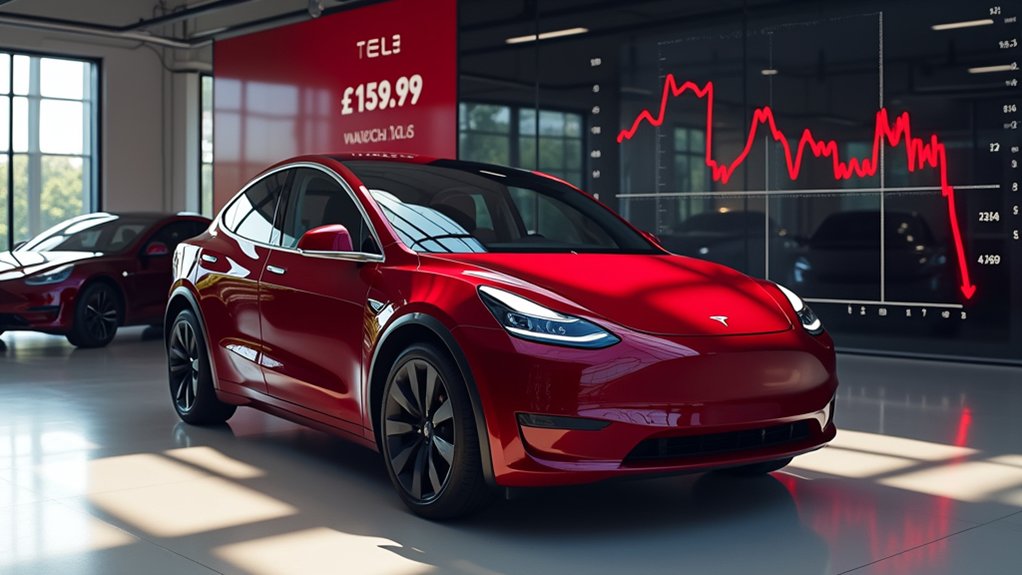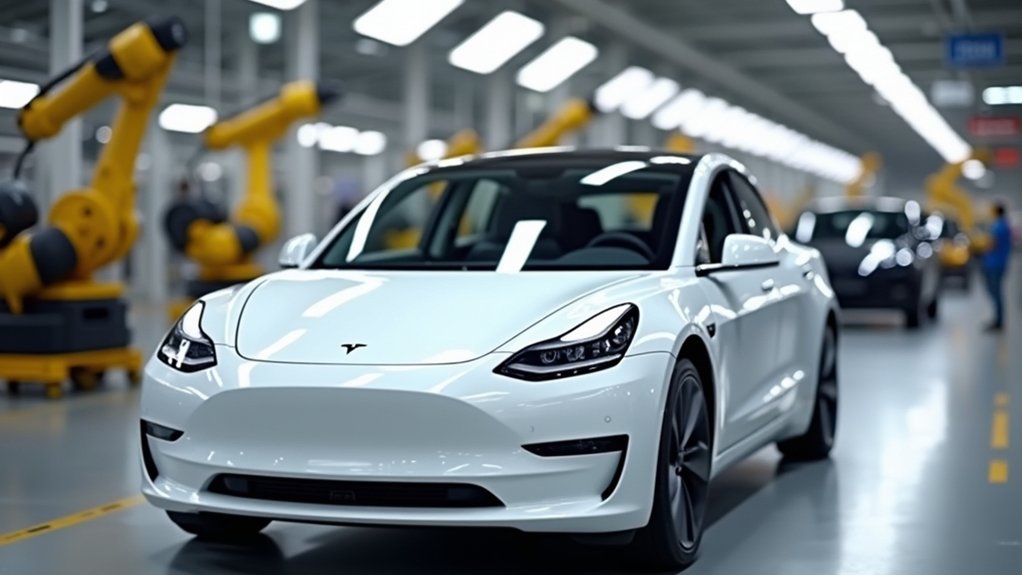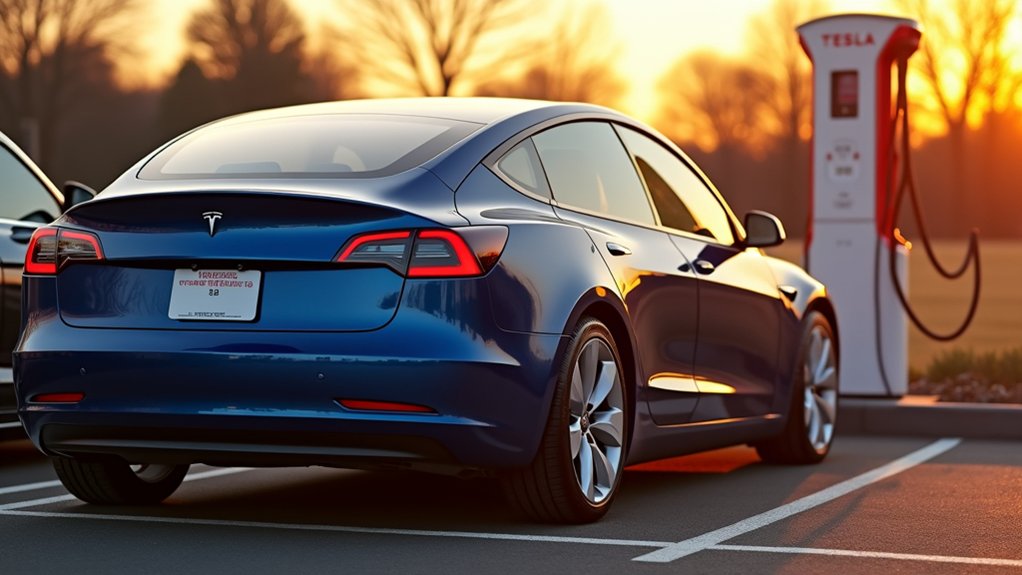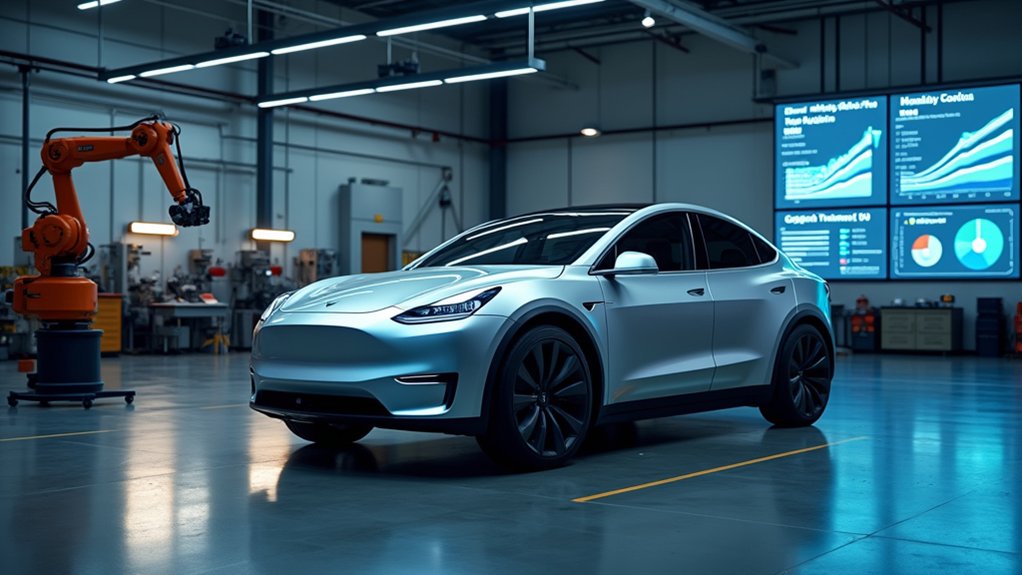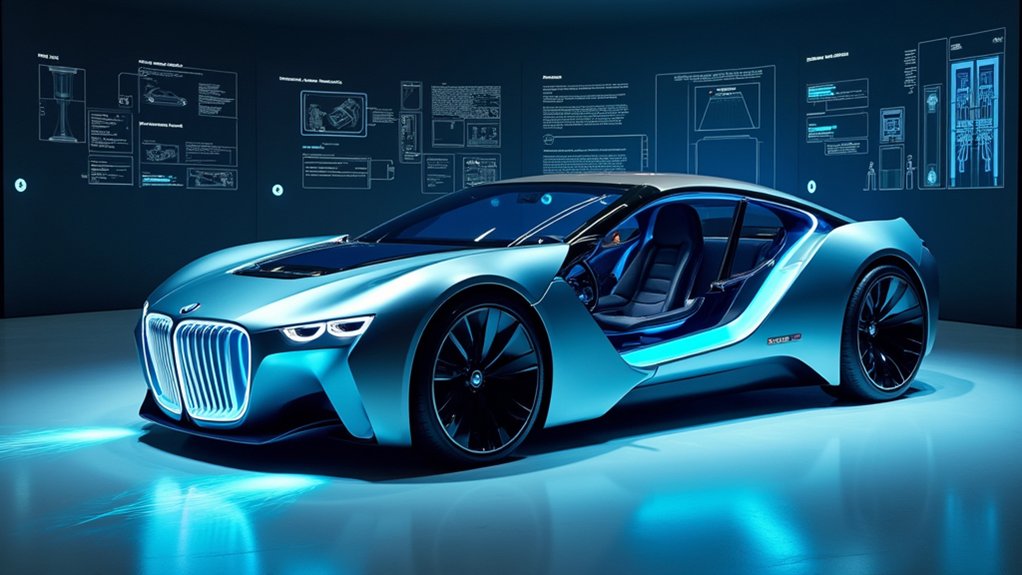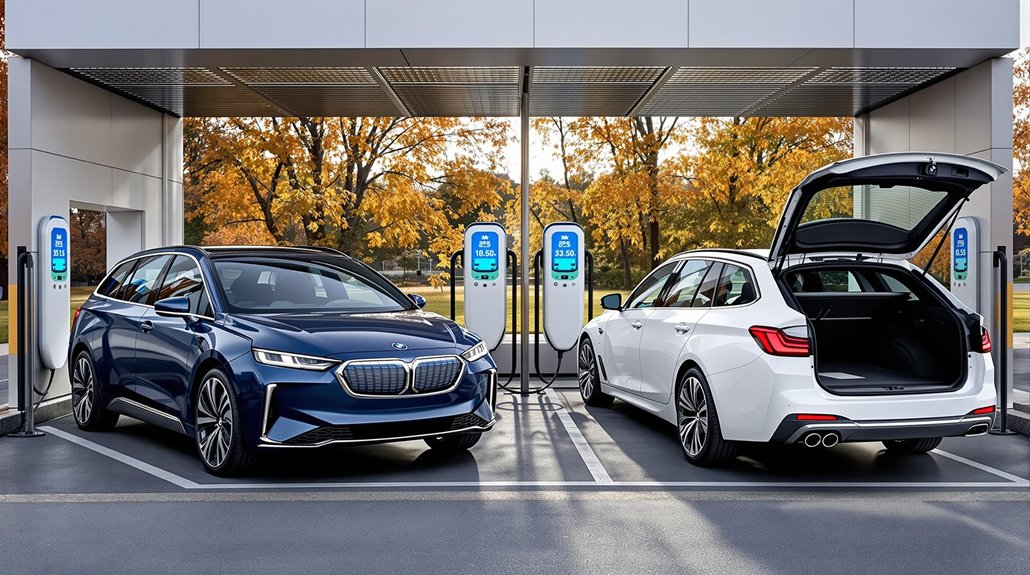While Tesla maintained its position as the leading electric vehicle manufacturer in the global market, the company experienced its first-ever year-over-year decline in deliveries during 2024. The EV pioneer reported 1.79 million deliveries, down from 1.81 million in 2023, signaling potential challenges in Tesla’s growth trajectory. This decline coincides with increased competition from both established manufacturers and newer EV startups.
Tesla’s financial performance reflected these delivery challenges, with Q4 2024 revenues of $25.71 billion falling short of the anticipated $27.35 billion. The adjusted EPS of $0.73 missed estimates by $0.05, contributing to investor concerns. I’ve tracked Tesla’s market movements for years, and this represents one of the more significant misses in recent quarters.
Financial storm clouds gather as Tesla’s Q4 performance misses key benchmarks, raising investor eyebrows across Wall Street.
The company’s stock has responded accordingly, dropping 18% to $395.30 by January 2025 after reaching a December peak of $479.86. Despite these setbacks, analysts remain cautiously optimistic about Tesla’s long-term outlook, projecting 2025 EPS of $2.19, a 7.4% increase from 2024.
Tesla’s dominance in the U.S. market, where it commands approximately 70% of EV sales, provides a strong foundation despite growing competition. The competition is particularly fierce in China, where local manufacturers like BYD have gained significant traction with more affordable models tailored to regional preferences. In fact, BYD delivered 600,000 units in Q4 2024, outpacing Tesla’s 495,570 deliveries during the same period. Tesla’s vehicles achieve a carbon break-even point after approximately 19,500 miles compared to conventional vehicles, highlighting their long-term environmental benefits.
The Model Y pricing strategy has drawn criticism as competitors introduce lower-cost alternatives. Tesla’s response to these market pressures will likely determine its ability to reverse the delivery decline in 2025. The company’s innovation roadmap, particularly advancements in full self-driving technology, remains essential to maintaining its technological edge. Tesla plans to launch its more affordable model in the first half of 2025, which could help revitalize sales.
Market saturation in established regions and Elon Musk’s controversial public image create additional headwinds. Nevertheless, Tesla’s considerable market capitalization of $770.1 billion reflects continued confidence in its leadership position within the EV sector, despite these mixed fortunes in early 2025.
